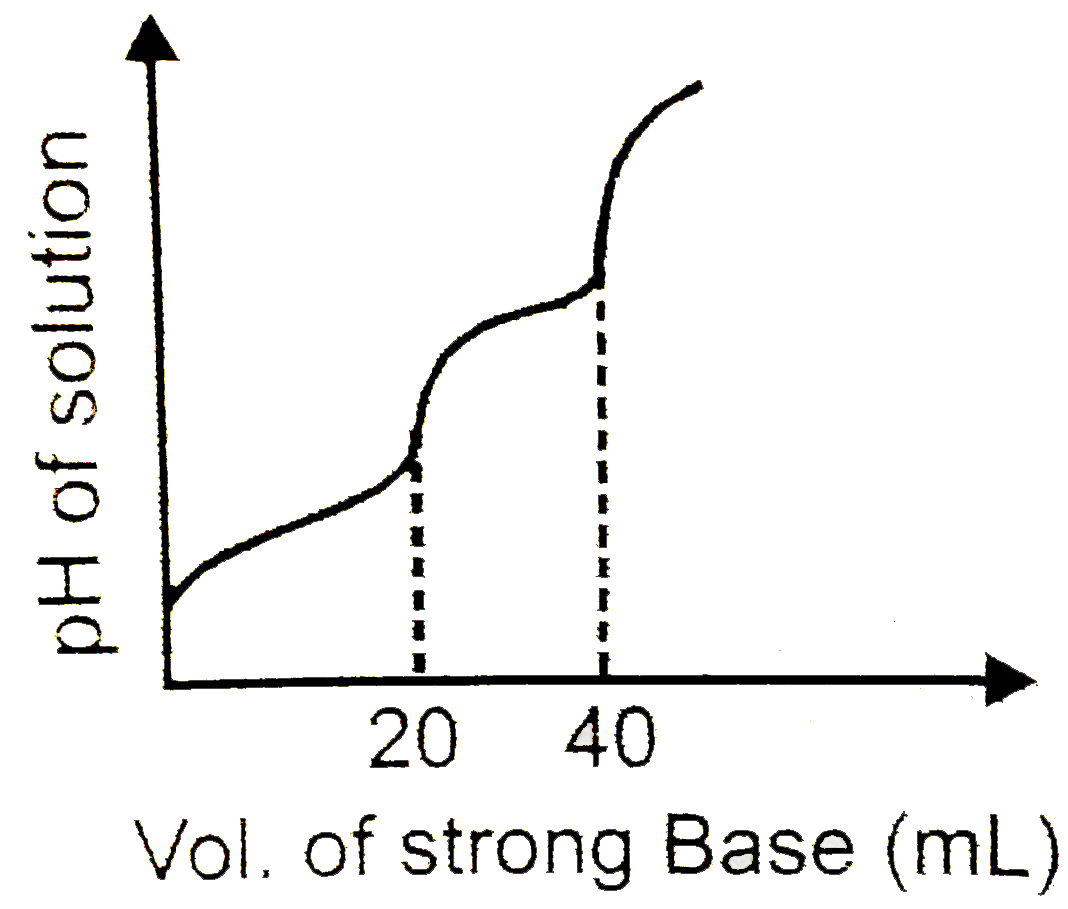0.1 M formic acid solution is titrated against 0.1 M NaOH solution. What would be the difference in pH between 1/5 and 4/5 stages of neutralization of acid?
2 log 3/4
2 log 1/5
log 1/3
2 log 4
The correct Answer is:D
To solve the problem of finding the difference in pH between the 1/5 and 4/5 stages of neutralization of a 0.1 M formic acid solution with 0.1 M NaOH, we can follow these steps:
1. Write the Neutralization Reaction:
The neutralization reaction between formic acid (HCOOH) and sodium hydroxide (NaOH) can be written as:
HCOOH+NaOH→HCOONa+H2O
2. Identify the Stages of Neutralization:
- At the 1/5 stage of neutralization, 1 part of the acid reacts with 5 parts of the base. Thus, if we start with A moles of formic acid, at this stage we have:
- Acid remaining: A−A5=4A5
- Salt formed: A5
- At the 4/5 stage of neutralization, 4 parts of the acid react with 5 parts of the base. Thus, we have:
- Acid remaining: A−4A5=A5
- Salt formed: 4A5
3. Calculate pH at 1/5 Stage:
At the 1/5 stage, we have an acid buffer solution consisting of:
- Acid: 4A5
- Salt: A5
The pH can be calculated using the Henderson-Hasselbalch equation:
pH1=pKa+log(SaltAcid)=pKa+log⎛⎝A54A5⎞⎠=pKa+log(14)
Simplifying gives:
pH1=pKa−log(4)
4. Calculate pH at 4/5 Stage:
At the 4/5 stage, we have:
- Acid: A5
- Salt: 4A5
Again using the Henderson-Hasselbalch equation:
pH2=pKa+log(SaltAcid)=pKa+log⎛⎝4A5A5⎞⎠=pKa+log(4)
5. Calculate the Difference in pH:
Now we can find the difference in pH between the two stages:
ΔpH=pH2−pH1
Substituting the expressions we found:
ΔpH=(pKa+log(4))−(pKa−log(4))
Simplifying gives:
ΔpH=log(4)+log(4)=2log(4)
Final Answer:
The difference in pH between the 1/5 and 4/5 stages of neutralization is:
ΔpH=2log(4)
The neutralization reaction between formic acid (HCOOH) and sodium hydroxide (NaOH) can be written as:
HCOOH+NaOH→HCOONa+H2O
- At the 1/5 stage of neutralization, 1 part of the acid reacts with 5 parts of the base. Thus, if we start with A moles of formic acid, at this stage we have:
- Acid remaining: A−A5=4A5
- Salt formed: A5
- At the 4/5 stage of neutralization, 4 parts of the acid react with 5 parts of the base. Thus, we have:
- Acid remaining: A−4A5=A5
- Salt formed: 4A5
At the 1/5 stage, we have an acid buffer solution consisting of:
- Acid: 4A5
- Salt: A5
pH1=pKa+log(SaltAcid)=pKa+log⎛⎝A54A5⎞⎠=pKa+log(14)
Simplifying gives:
pH1=pKa−log(4)
At the 4/5 stage, we have:
- Acid: A5
- Salt: 4A5
pH2=pKa+log(SaltAcid)=pKa+log⎛⎝4A5A5⎞⎠=pKa+log(4)
Now we can find the difference in pH between the two stages:
ΔpH=pH2−pH1
Substituting the expressions we found:
ΔpH=(pKa+log(4))−(pKa−log(4))
Simplifying gives:
ΔpH=log(4)+log(4)=2log(4)
The difference in pH between the 1/5 and 4/5 stages of neutralization is:
ΔpH=2log(4)
Topper's Solved these Questions
- IONIC EEQUILIBRIUMBOOK - NARENDRA AWASTHI ENGLISHCHAPTER - IONIC EEQUILIBRIUMEXERCISE - Level- 2
35 Videos
- IONIC EEQUILIBRIUMBOOK - NARENDRA AWASTHI ENGLISHCHAPTER - IONIC EEQUILIBRIUMEXERCISE - Level- 3
19 Videos
- GASEOUS STATEBOOK - NARENDRA AWASTHI ENGLISHCHAPTER - GASEOUS STATEEXERCISE - Subjective problems
15 Videos
- SOLID STATEBOOK - NARENDRA AWASTHI ENGLISHCHAPTER - SOLID STATEEXERCISE - Subjective Problems
13 Videos
Similar Questions
0.1 M acetic acid solution is titrated against 0.1M NaOH solution. What would be the difference in pH between 14 and 34 stages of neutralisation of acid ?
View SolutionWhat is the difference in pH for 1/3 and 2/3 stages of neutralization of 0.1MCH3COOH with 0.1MNaOH?
View Solution0.1MCH3COOH solution is titrated against 0.05MNaOH solution. Calculate pH at 1/4th and stages of neutrazation of acid.The pH for 0.1 M CH3COOH is 3.
View Solution10 mL of H2A(weak diprotic acid) solution is titrated against 0.1M NaOH. pH of the solution is plotted against volume of strong base added and following observation is made. If pH of the solution at first equivalence point is pH1 and at second equivalence point is pH2. Calculate the value of (pH2−pH1) at 25∘C
Given for H2A,pKa1 =4.6 and pKa2 =8, log 25=1.4
View Solution10 mLof H2A (weak diprotic acid) solutions is titrated against 0.1M NaOH. pH of the solution is plotted against volume of strong base added and following observation is made. If pH of the solution at 1st equivalence point is pH1 and at 2nd equivalence point is pH2, Cal the value (pH2,−pH1) at 25∘C. Given for H2,A,pKal=4.6&pKa2=8

View SolutionA weak acid of dissociation constant 10−5 is being titrated with aqueous NaOH solution . The pH at the point of one third of neutralization of the acid will be
View SolutionA certain mixture of HCl and CH3−COOH is 0.1M in each of the acids. 20ml of this solution is titrated against 0.1MNaOH. By how many units does the pH change from the start to the stage when the HCl is almost completely neutralized and acidic acid remains unreacted? Ka for acetic acid =2×10−5.
View SolutionA certain mixture of HCl and CH3−COOH is 0.1M in each of the acids.20 ml of this solution is titrated against 0.1M NaOH.By how many units does the pH changes form the start to the stage when the HCl is almost completely neutralised ? Ka for acetic acid=1.8×10−5.
View SolutionA weak acid (HA) is titrated with N/100NaOH. What will be the pH when 50% of titration is completed. Given Ka=1−4 & concentration of HA=0.1M
View SolutionThe equivalent point in a titration of 40.0mL of a sodium of a weak monoprotic acid occurs when 35.0mL of a 0.10MNaOH solutio has been added. The pH of the solution is 5.5 after the addition of 20.0mL of NaOH solution. What is the dissociation constant of the acid ?
View Solution
